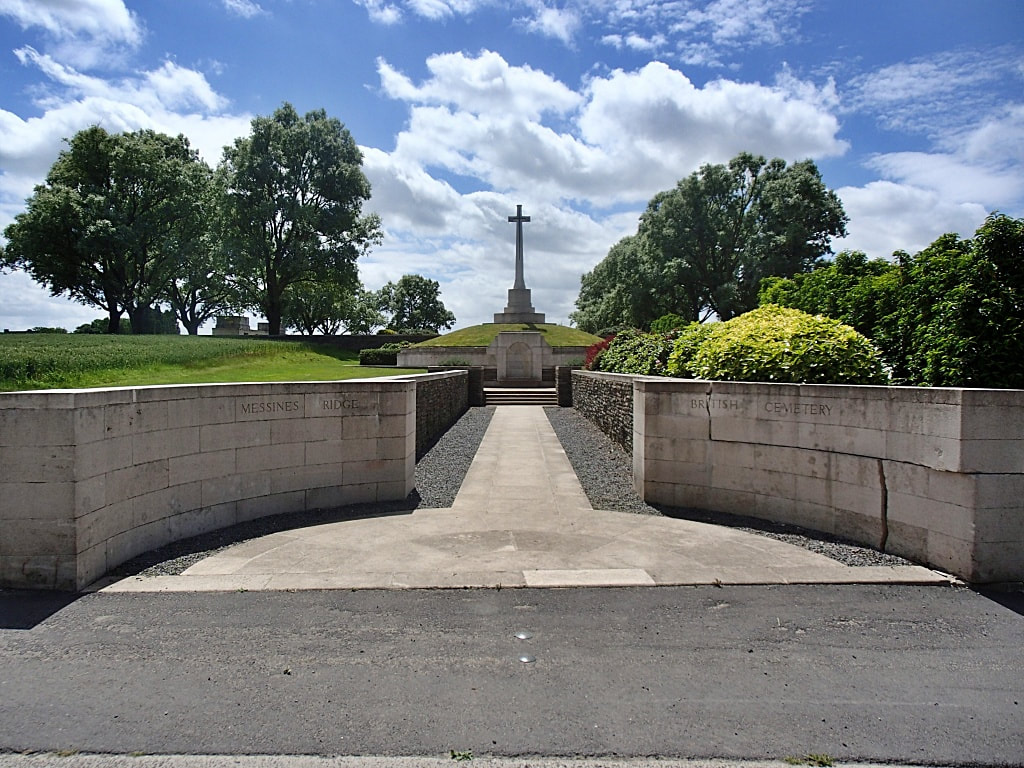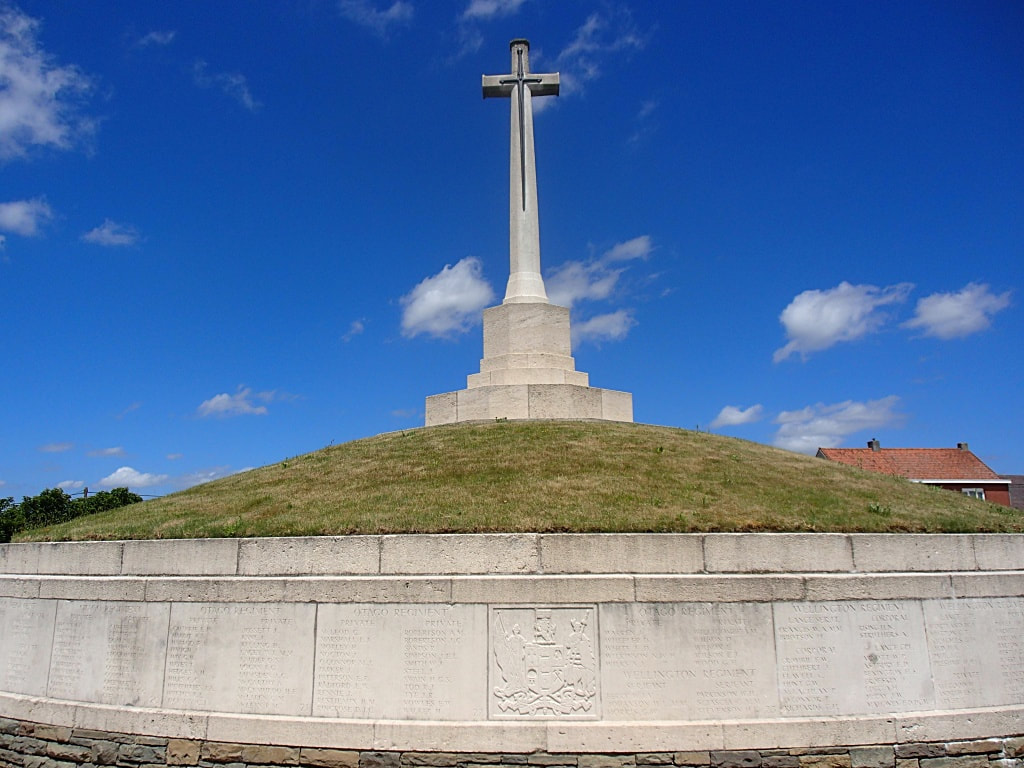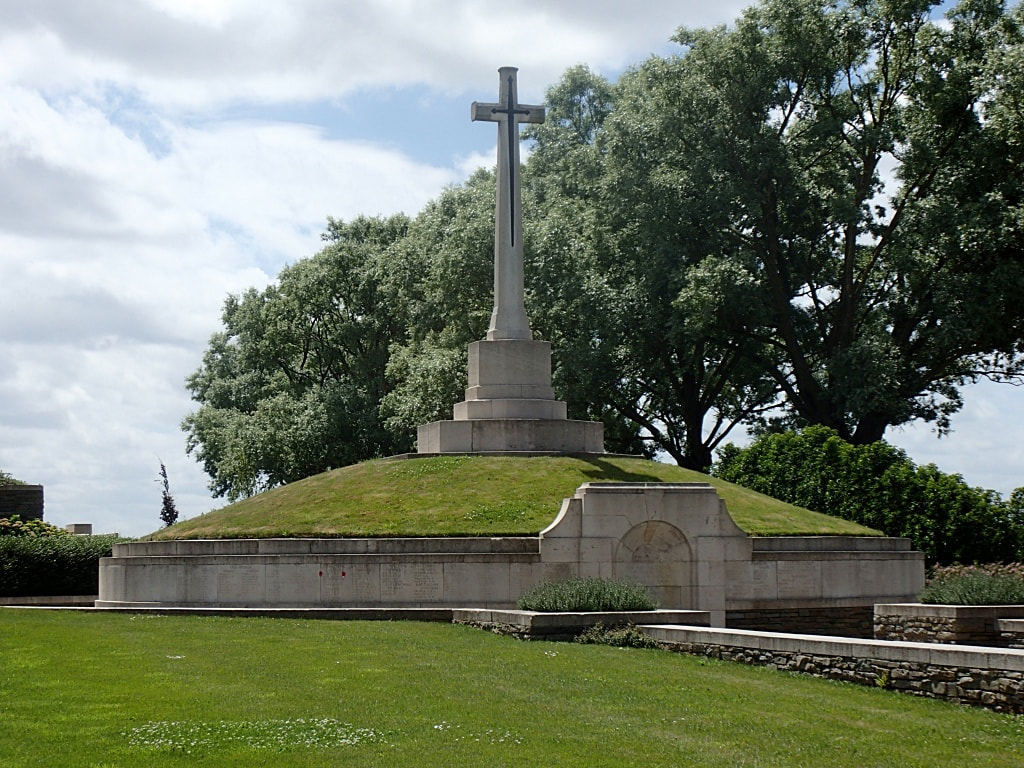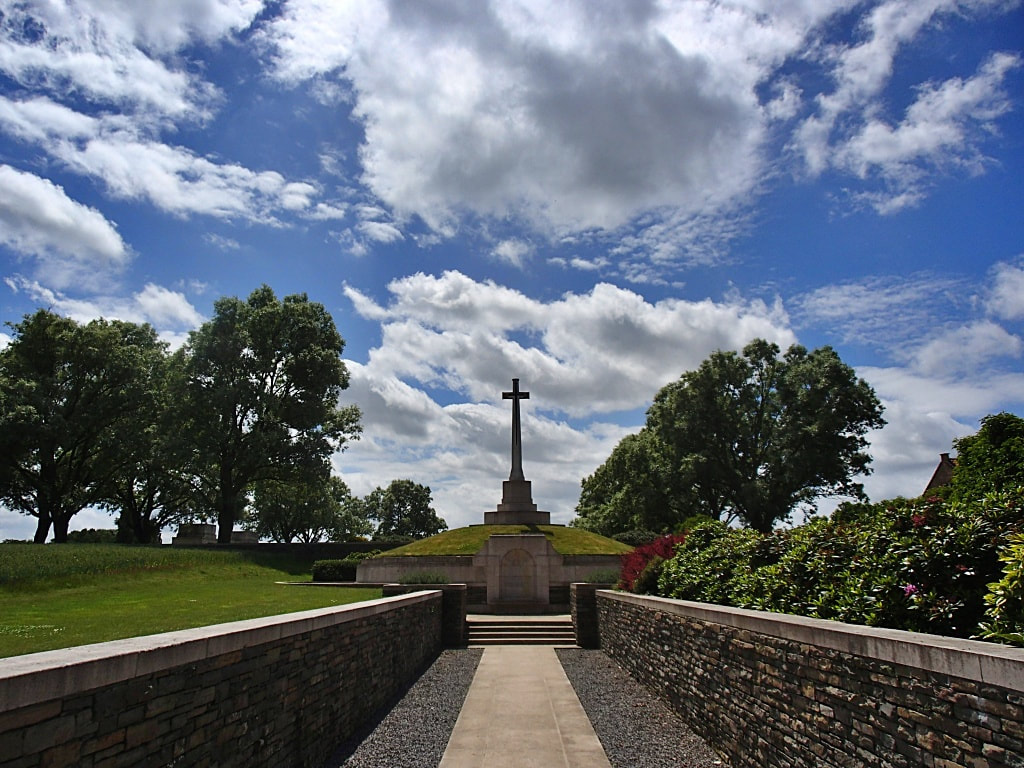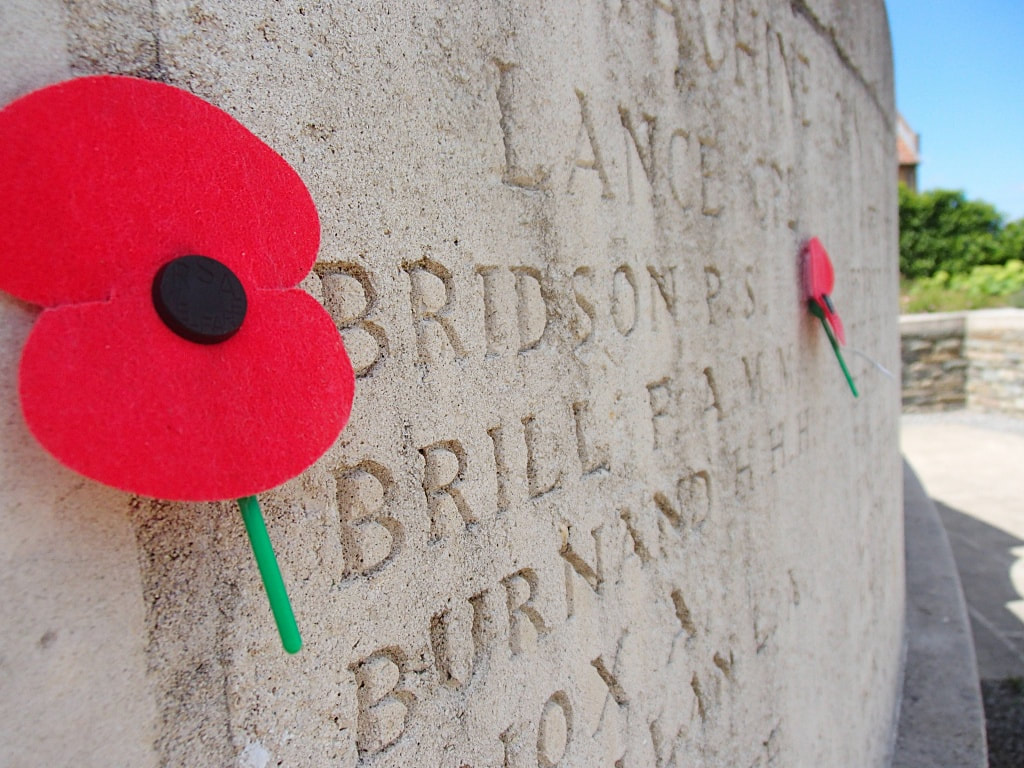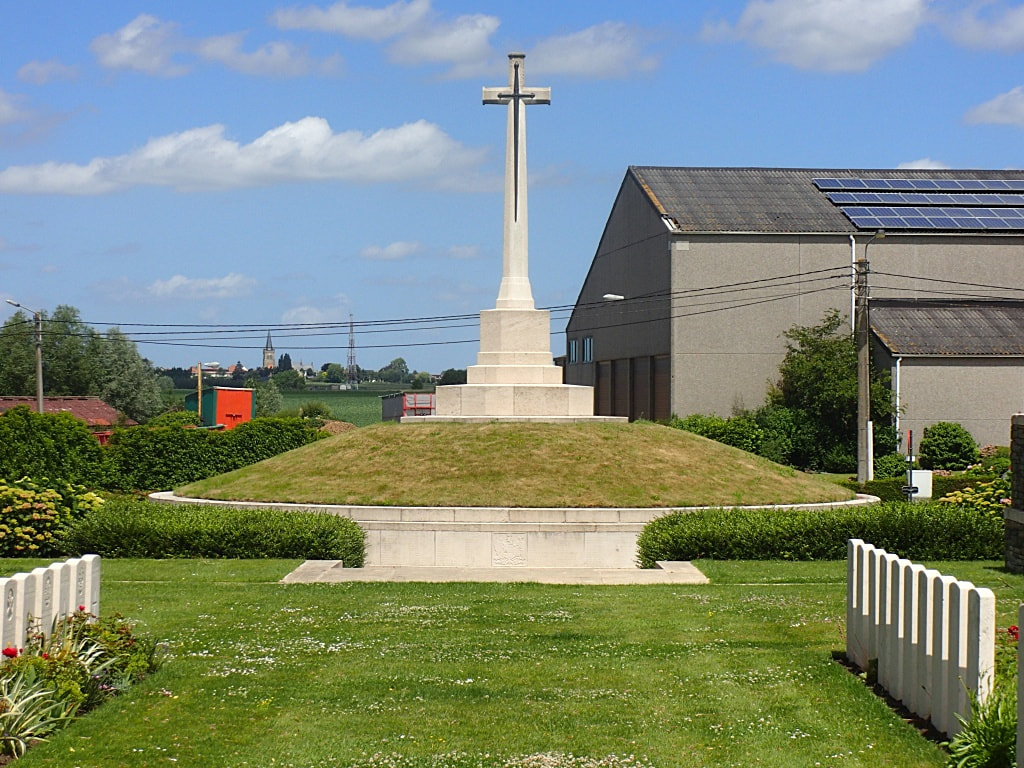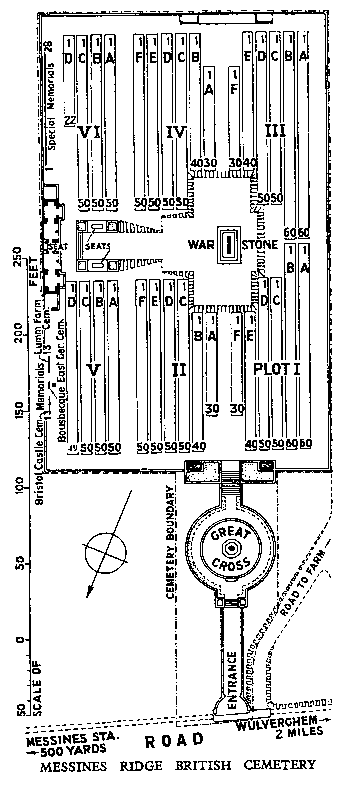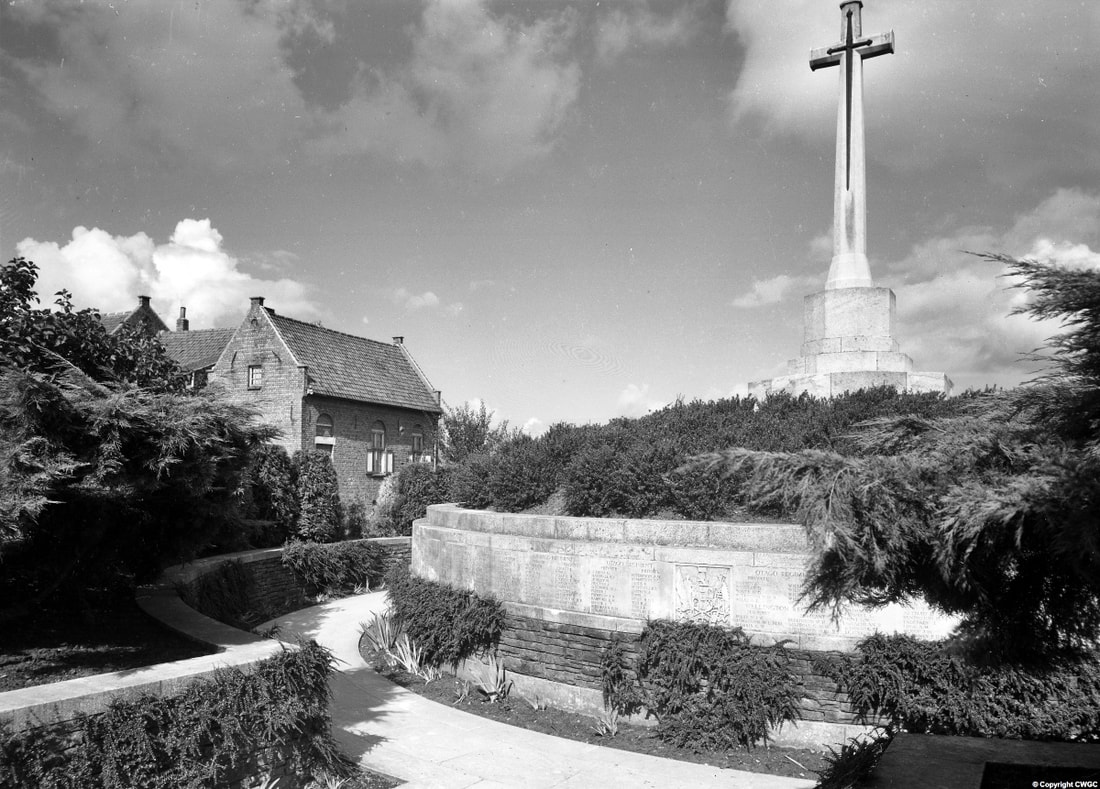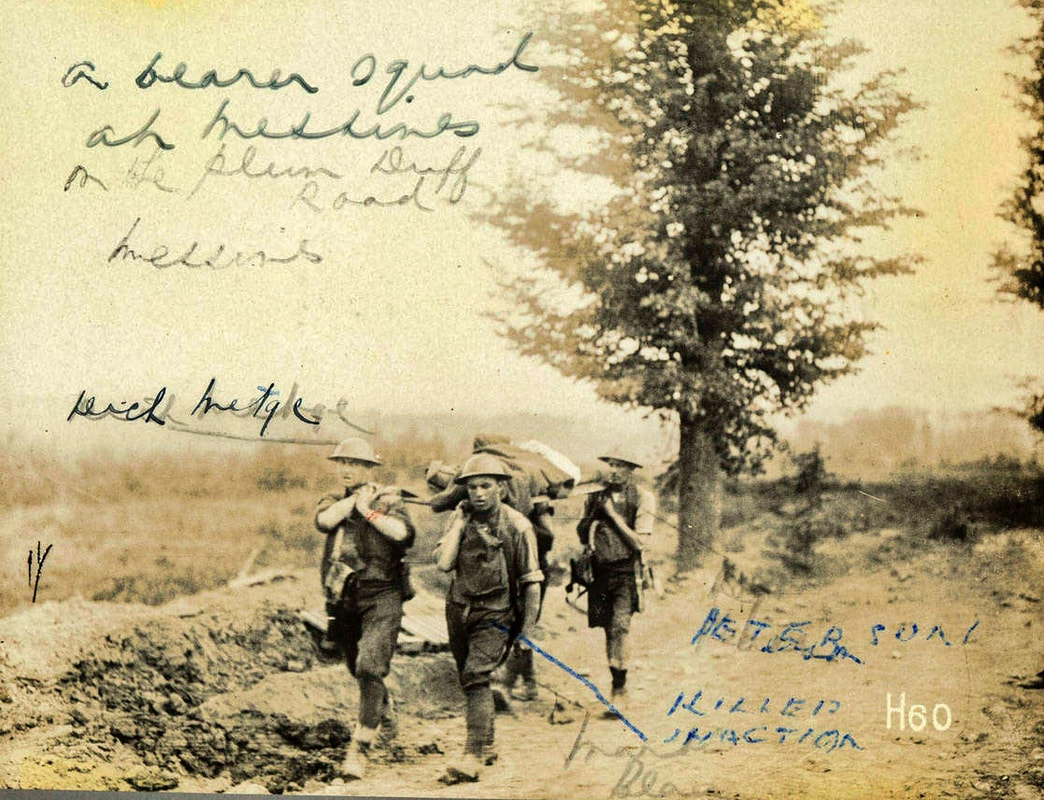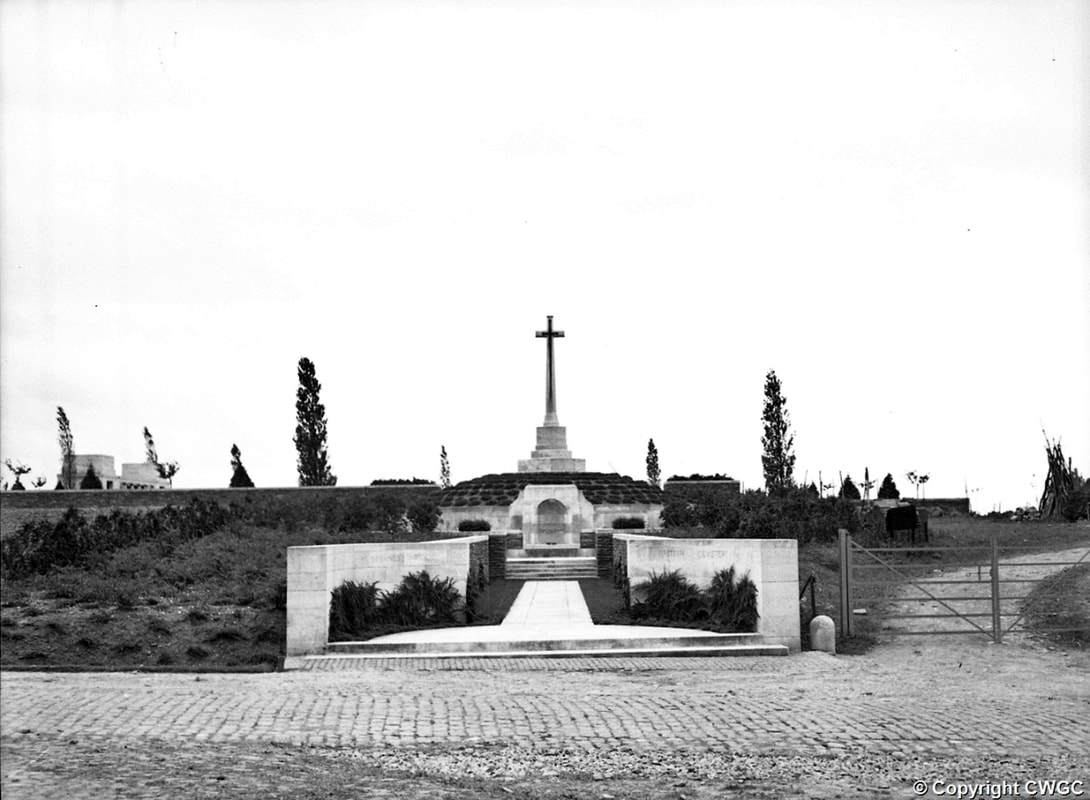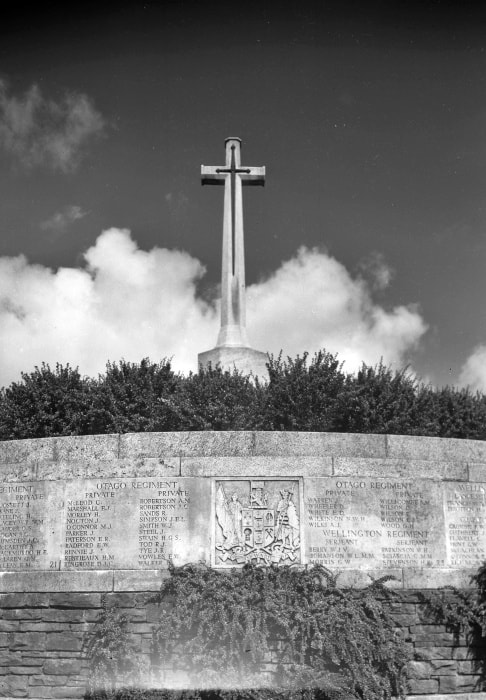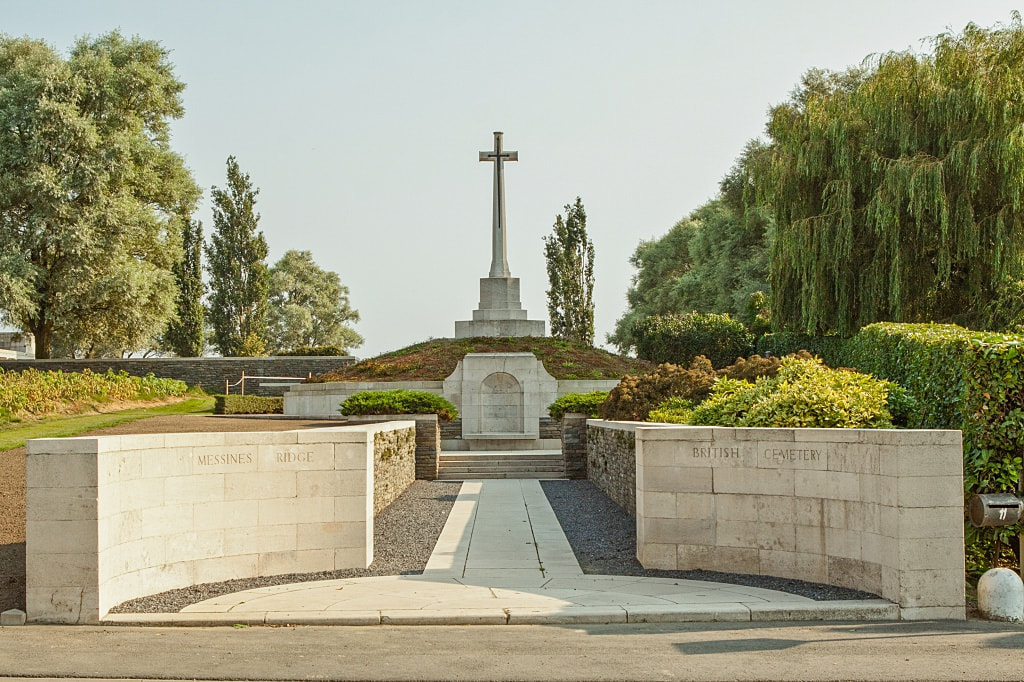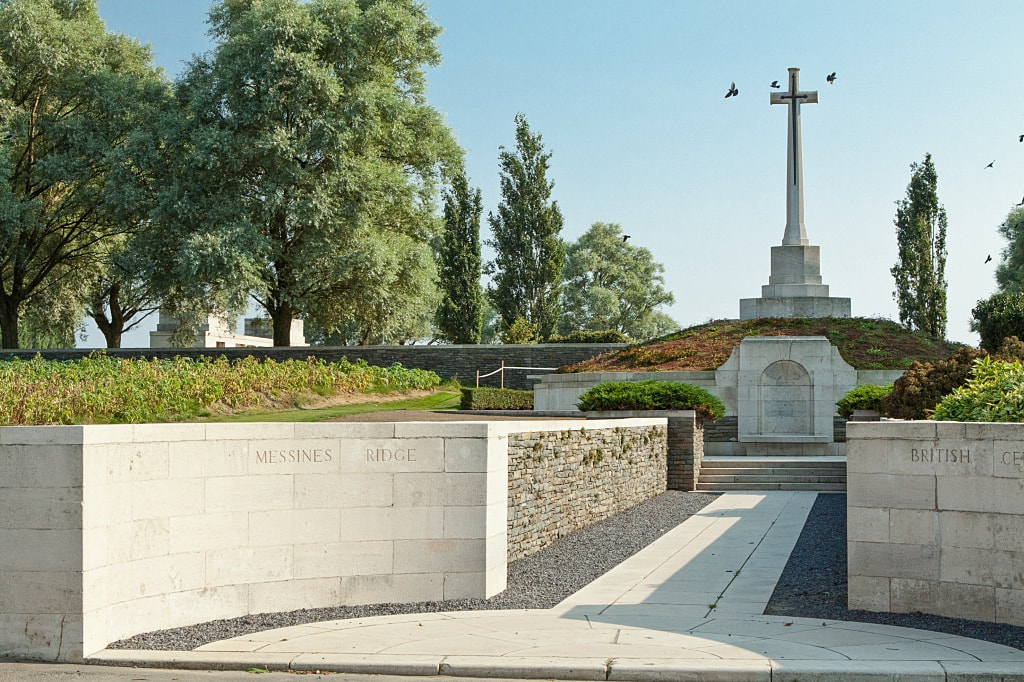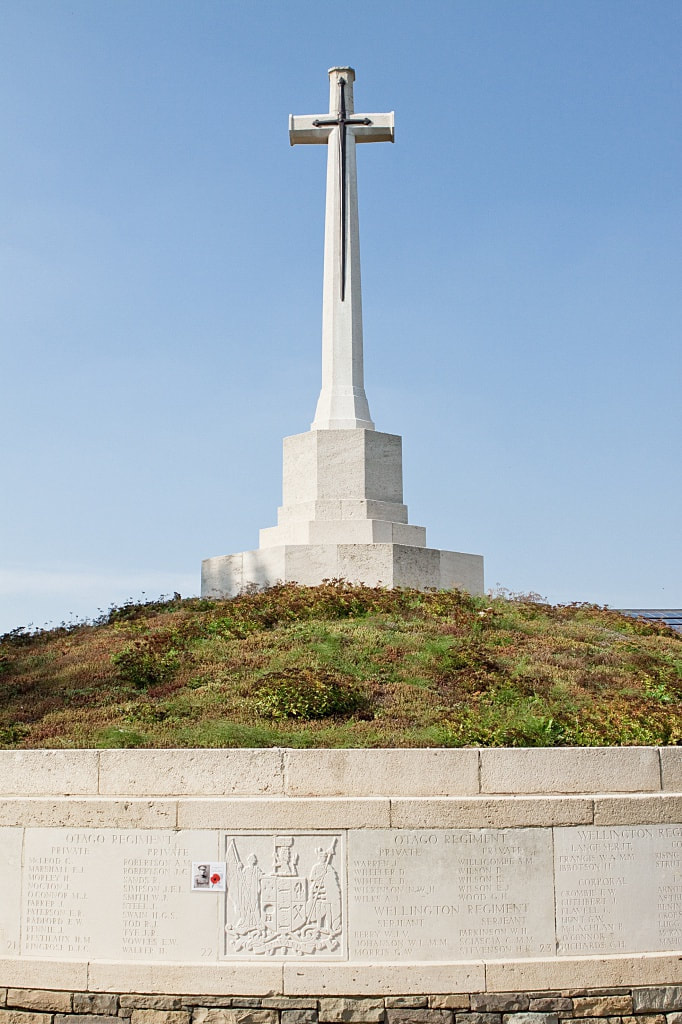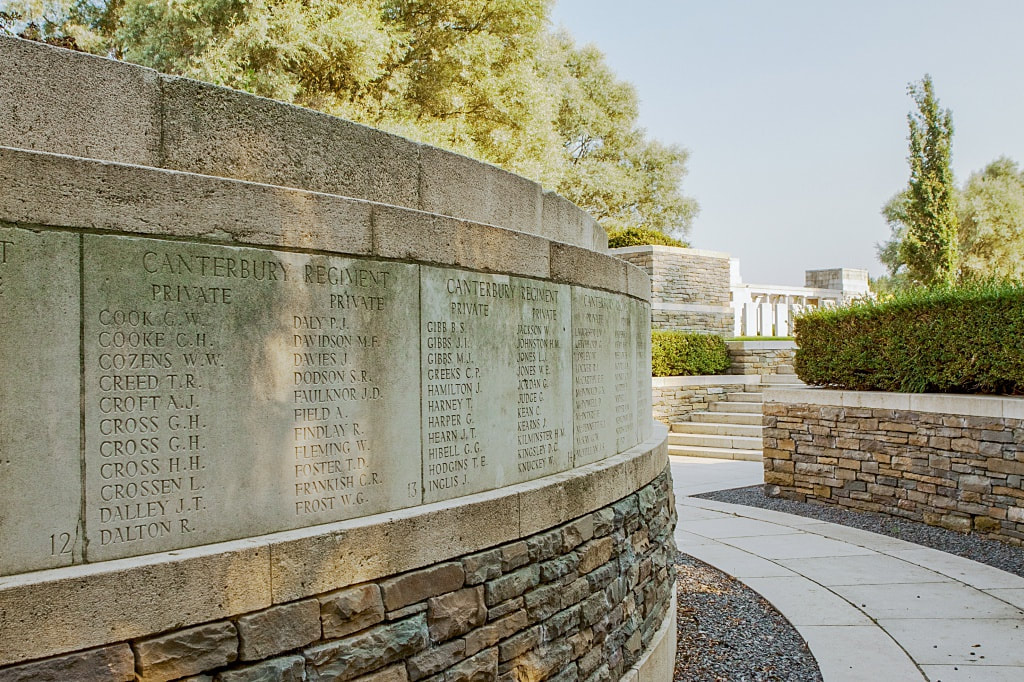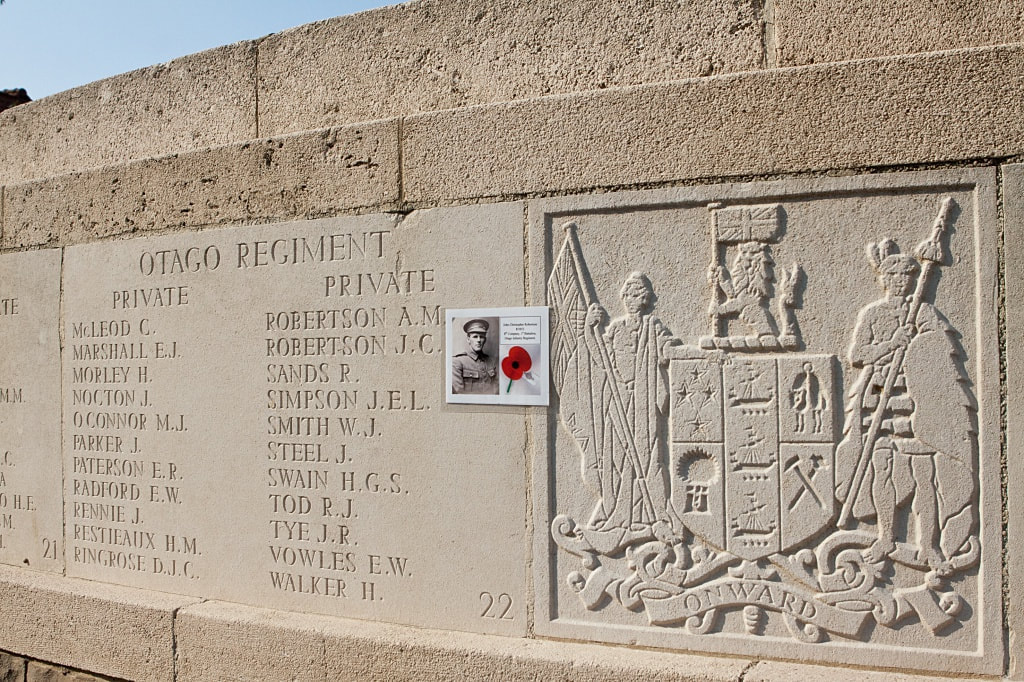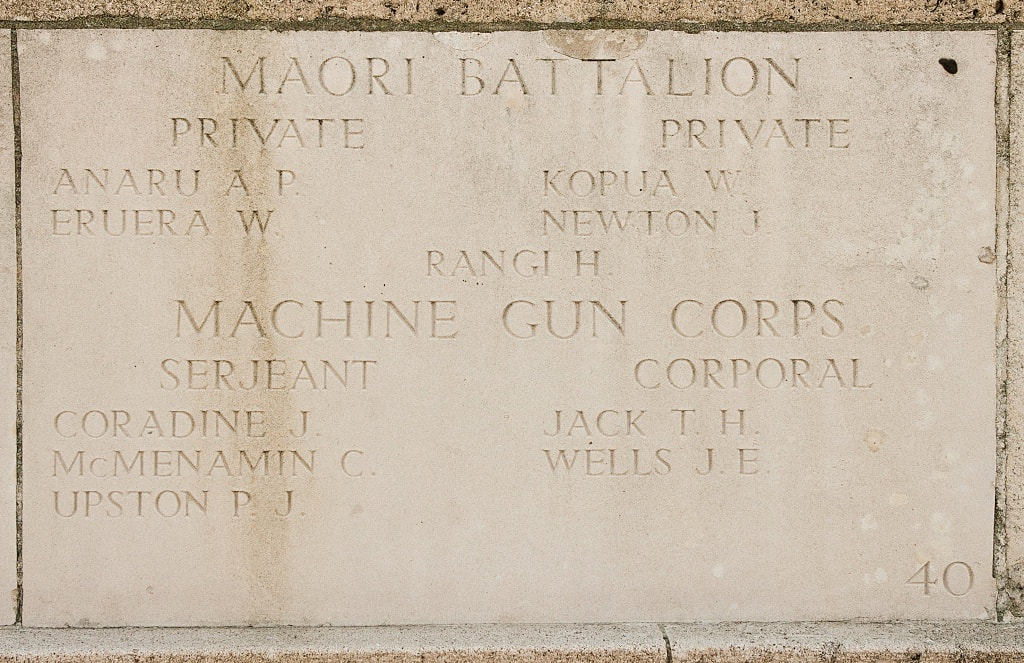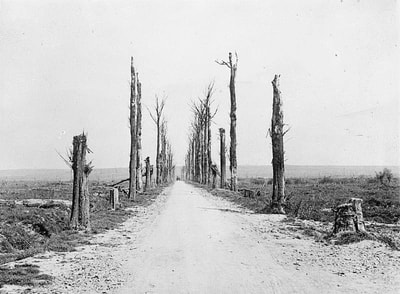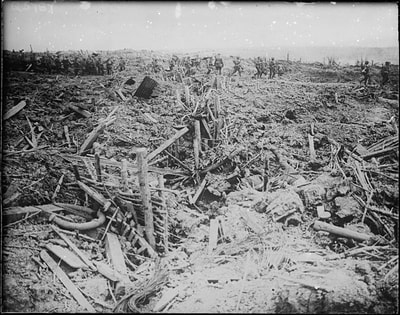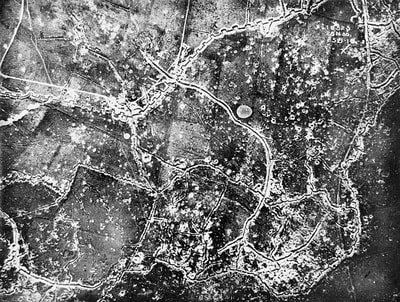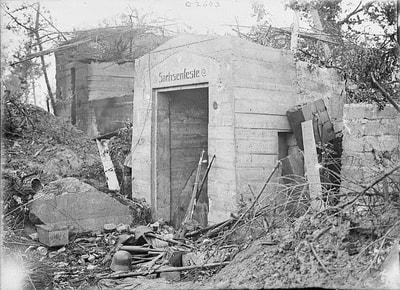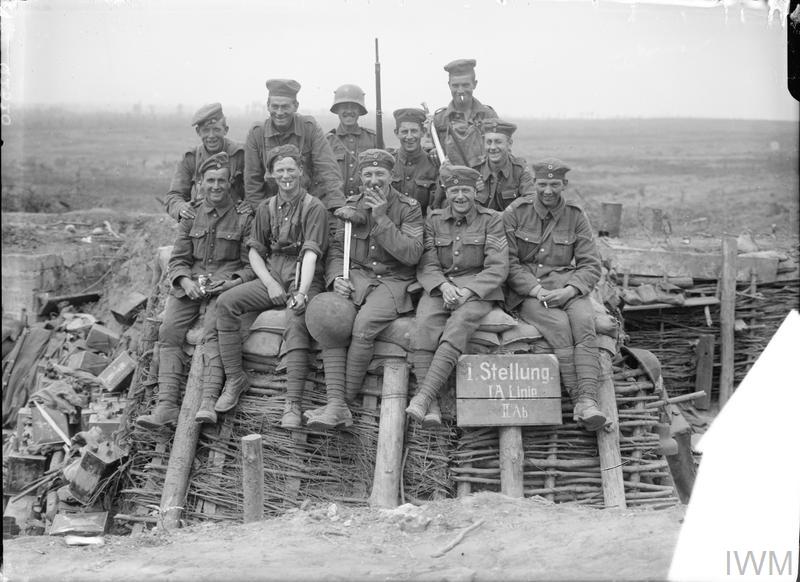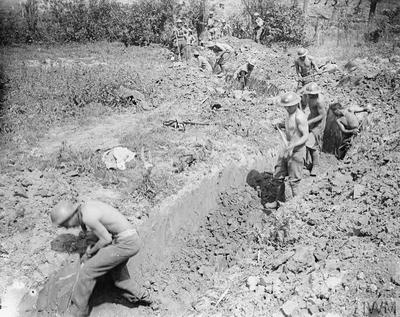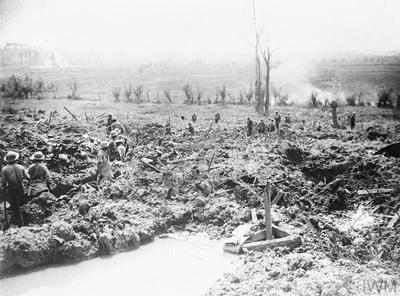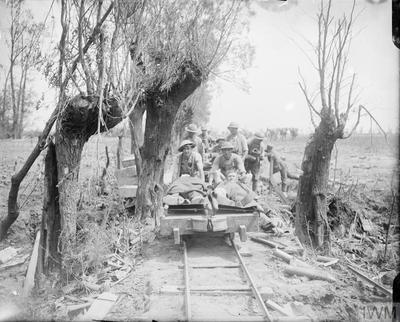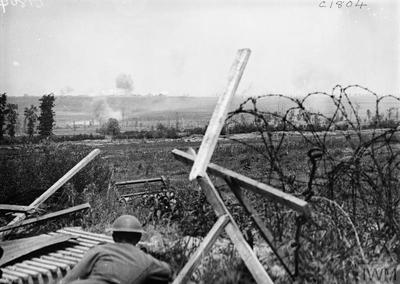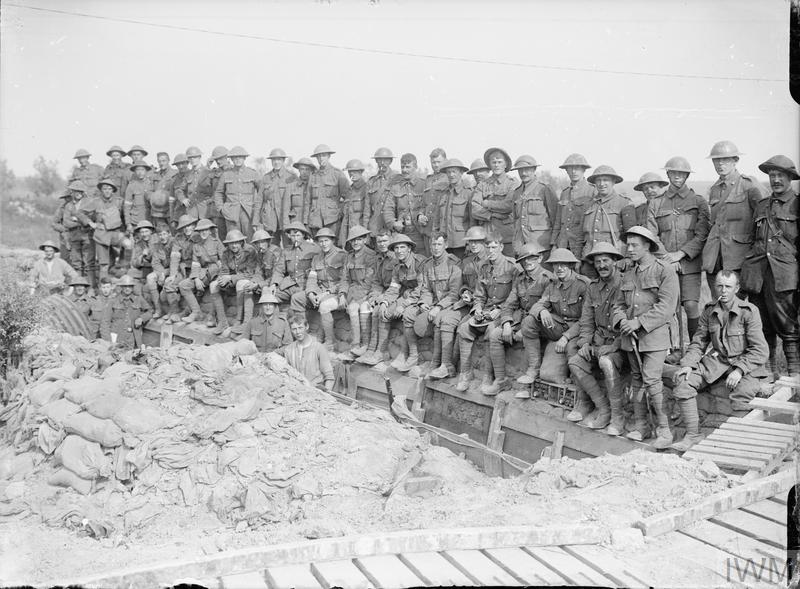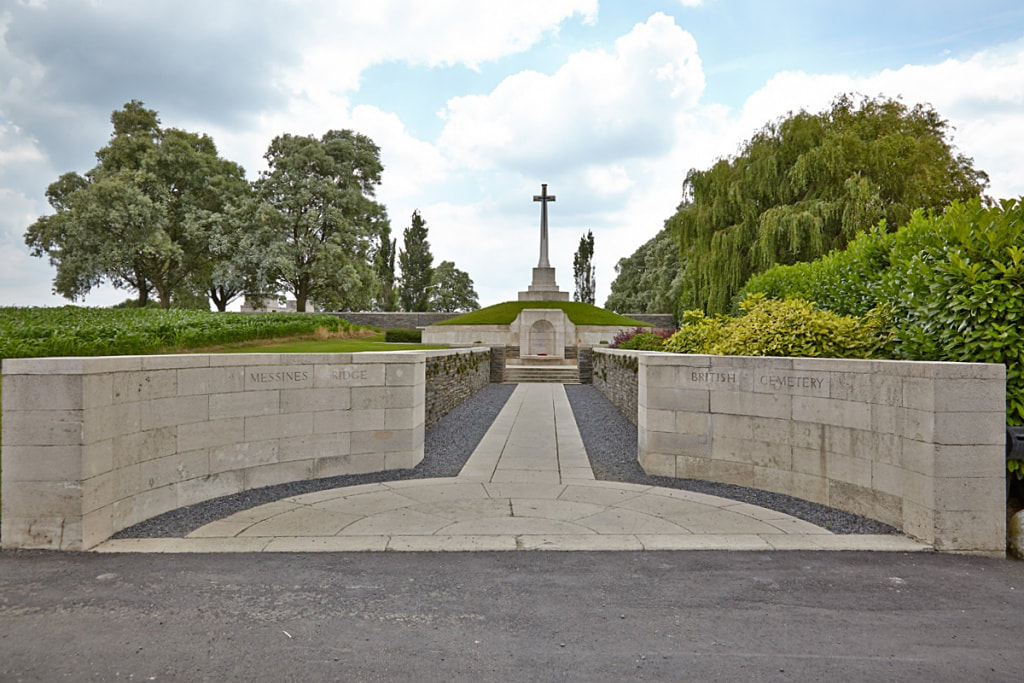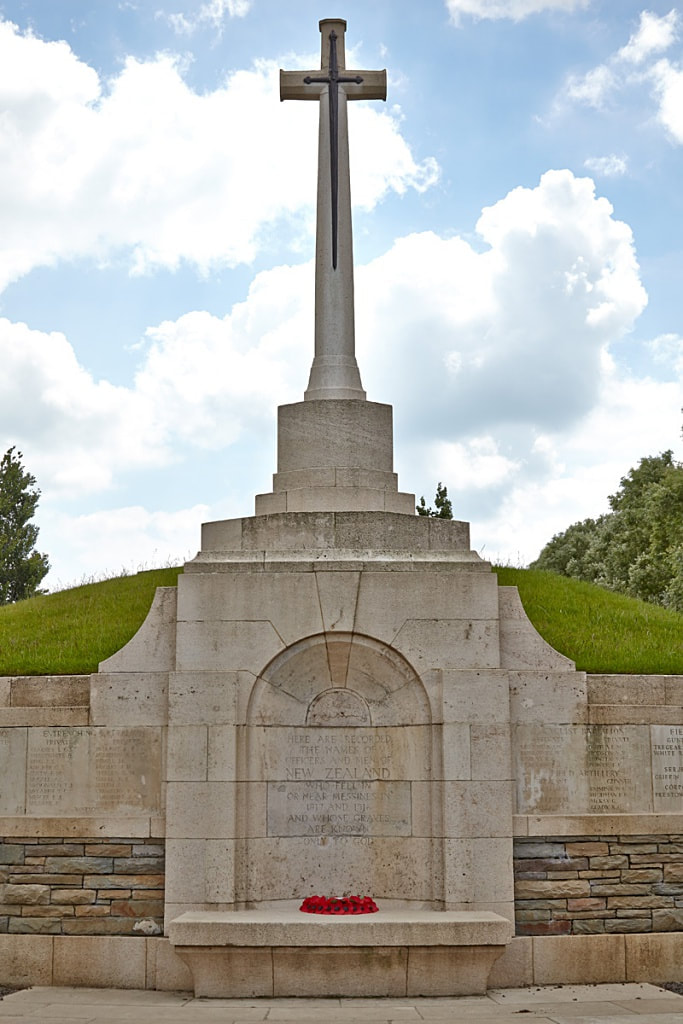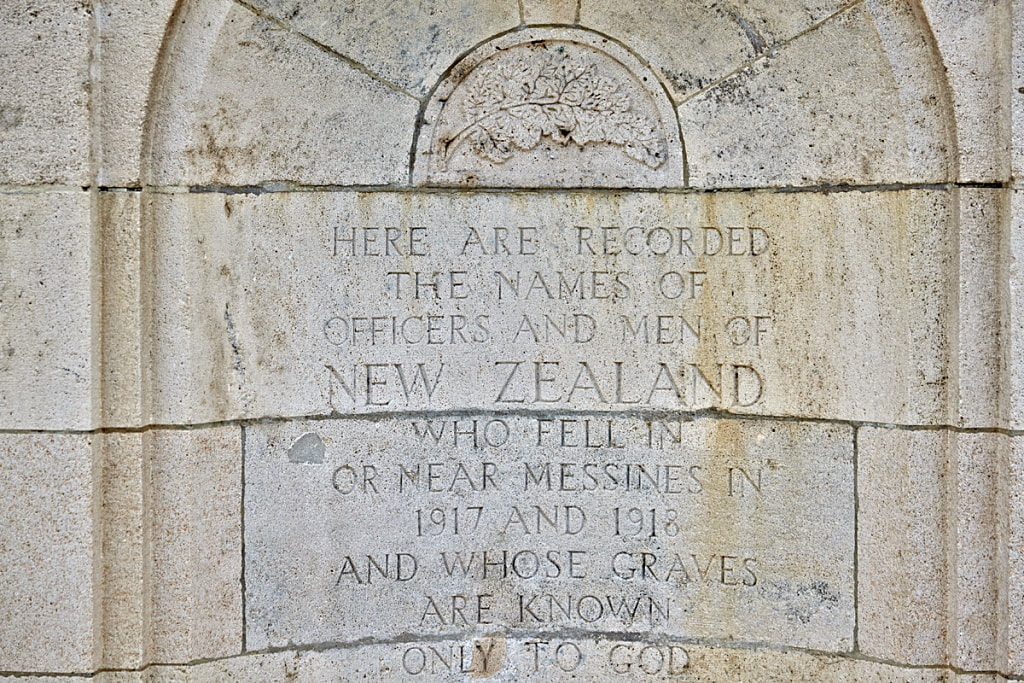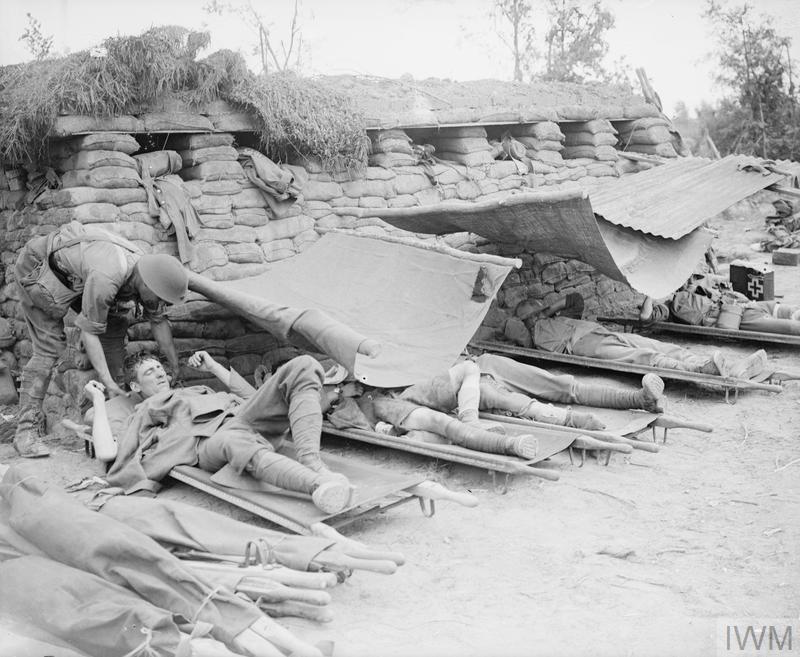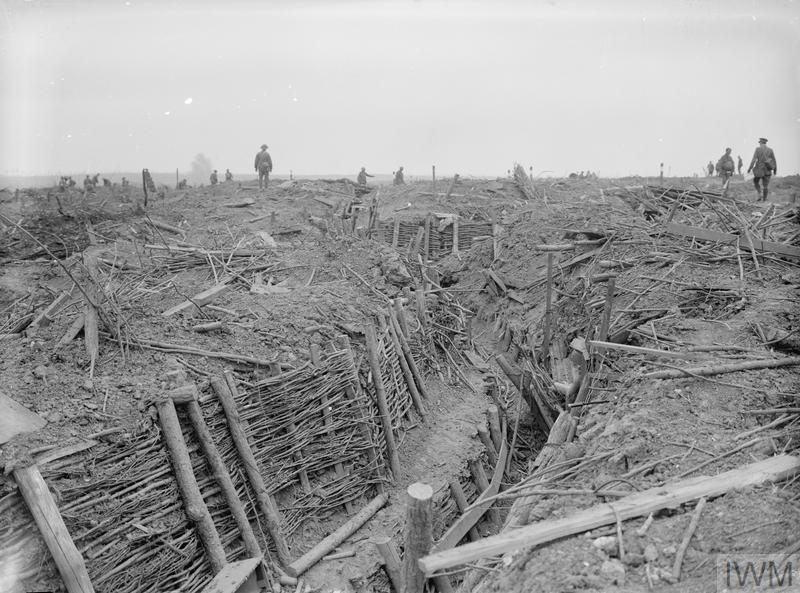MESSINES RIDGE NEW ZEALAND MEMORIAL
West-Vlaanderen
Belgium
GPS Coordinates: Latitude: 50.76509 Longitude: 2.89072
Location Information
The Messines Ridge (New Zealand) Memorial to the Missing is situated within Messines Ridge British Cemetery, which is located 9.5 Kms south of Ieper town centre on the Nieuwkerkestraat, a road leading from the Rijselseweg, N365, which connects Ieper to Wijtschate, Mesen and on to Armentieres.
From Ieper town centre the Rijselsestraat runs from the market square, through the Lille Gate (Rijselpoort) and directly over the crossroads with the Ieper ring road. The road name then changes to the Rijselseweg.
Nieuwkerkestraat is a right hand turning from the N365 in the town of Mesen. The memorial lies 250 metres after this right hand turning, on the left hand side of the road.
Visiting Information
Wheelchair access to the cemetery is possible, but may be by an alternative entrance.
Historical Information
Messines (now Mesen) was considered a strong strategic position, not only from its height above the plain below, but from the extensive system of cellars under the convent known as the 'Institution Royale'. The village was taken from the 1st Cavalry Division by the German 26th Division on 31 October-1 November 1914. An attack by French troops on 6 -7 November was unsuccessful and it was not until the Battle of Messines on 7 June 1917 that it was retaken by the New Zealand Division. On 10-11 April 1918, the village fell into German hands once more after a stubborn defence by the South African Brigade, but was retaken for the last time on 28-29 September 1918.
The MESSINES RIDGE (NEW ZEALAND) MEMORIAL stands within Messines Ridge British Cemetery and commemorates over 828 soldiers of the New Zealand Expeditionary Force who died in or near Messines in 1917 and 1918 and who have no known grave.
This is one of seven memorials in France and Belgium to those New Zealand soldiers who died on the Western Front and whose graves are not known. The memorials are all in cemeteries chosen as appropriate to the fighting in which the men died.
Commemorated on Memorial: New Zealand 828.
MESSINES RIDGE BRITISH CEMETERY, in which this memorial stands, occupies ground that belonged to the 'Institution Royale'. It was made after the Armistice when graves were brought in from the battlefield around Messines and from a number of small burial grounds in the area. The dates of death of those buried here range from October 1914 to October 1918, but the majority died in the fighting of 1917.
There are now 1,536 Commonwealth servicemen of the First World War buried or commemorated in the cemetery. 956 of the burials are unidentified, but special memorials commemorate a number of casualties known or believed to be buried among them, or who were buried in other cemeteries where their graves were destroyed by shell fire.
Total Burials: 1,535.
Identified Casualties: United Kingdom 296, Australia 204, New Zealand 67, South Africa 10, Canada 1. Total 578.
Unidentified Casualties: 957.
Both cemetery and memorial were designed by Charles Holden and Captain Wilfred Clement Von Berg, M. C.
The Messines Ridge (New Zealand) Memorial to the Missing is situated within Messines Ridge British Cemetery, which is located 9.5 Kms south of Ieper town centre on the Nieuwkerkestraat, a road leading from the Rijselseweg, N365, which connects Ieper to Wijtschate, Mesen and on to Armentieres.
From Ieper town centre the Rijselsestraat runs from the market square, through the Lille Gate (Rijselpoort) and directly over the crossroads with the Ieper ring road. The road name then changes to the Rijselseweg.
Nieuwkerkestraat is a right hand turning from the N365 in the town of Mesen. The memorial lies 250 metres after this right hand turning, on the left hand side of the road.
Visiting Information
Wheelchair access to the cemetery is possible, but may be by an alternative entrance.
Historical Information
Messines (now Mesen) was considered a strong strategic position, not only from its height above the plain below, but from the extensive system of cellars under the convent known as the 'Institution Royale'. The village was taken from the 1st Cavalry Division by the German 26th Division on 31 October-1 November 1914. An attack by French troops on 6 -7 November was unsuccessful and it was not until the Battle of Messines on 7 June 1917 that it was retaken by the New Zealand Division. On 10-11 April 1918, the village fell into German hands once more after a stubborn defence by the South African Brigade, but was retaken for the last time on 28-29 September 1918.
The MESSINES RIDGE (NEW ZEALAND) MEMORIAL stands within Messines Ridge British Cemetery and commemorates over 828 soldiers of the New Zealand Expeditionary Force who died in or near Messines in 1917 and 1918 and who have no known grave.
This is one of seven memorials in France and Belgium to those New Zealand soldiers who died on the Western Front and whose graves are not known. The memorials are all in cemeteries chosen as appropriate to the fighting in which the men died.
Commemorated on Memorial: New Zealand 828.
MESSINES RIDGE BRITISH CEMETERY, in which this memorial stands, occupies ground that belonged to the 'Institution Royale'. It was made after the Armistice when graves were brought in from the battlefield around Messines and from a number of small burial grounds in the area. The dates of death of those buried here range from October 1914 to October 1918, but the majority died in the fighting of 1917.
There are now 1,536 Commonwealth servicemen of the First World War buried or commemorated in the cemetery. 956 of the burials are unidentified, but special memorials commemorate a number of casualties known or believed to be buried among them, or who were buried in other cemeteries where their graves were destroyed by shell fire.
Total Burials: 1,535.
Identified Casualties: United Kingdom 296, Australia 204, New Zealand 67, South Africa 10, Canada 1. Total 578.
Unidentified Casualties: 957.
Both cemetery and memorial were designed by Charles Holden and Captain Wilfred Clement Von Berg, M. C.

After the tremor we saw the flames. I think Kruisstraat was the first, Spanbroekmolen, almost simultaneously with it. A sheet of flame that got tongued in the end. It went up higher than St Paul's - I estimated about 800 feet. It was a white incandescent light, we knew that the temperature was about 3,000 degrees centigrade. The German's there went up as gas. The biggest bit of German I found afterwards was one foot in a boot. (Lieut. Bryan Frayling)

.....We all got out of the tank and walked over to this huge crater. You'd never seen anything like the size of it; you'd never think that explosives would do it. But I saw about 150 Germans laid there, in different positions, throwing a bomb, a gun on their shoulder, all laid there dead. The mine had killed them. The crew stood there for about five minutes and looked. It made us think. That mine had won the battle before it started. We looked at each other as we came away and the sight of it remained with you always. To see them all laid there with their eyes open. (Pte. Frederick Collins)
Images in this gallery © Werner Van Caneghem
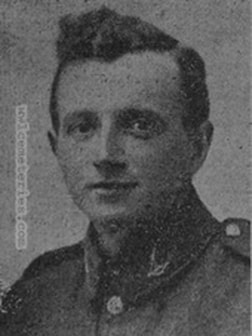
100299 Private
Norman Linney
2nd Bn. Auckland Regiment, N. Z. E. F.
7th June 1917, aged 24.
Youngest son of the late William Edward and Margaret Linney, of Burnley, England. One of three brothers, two of whom fell. His brother, Thomas was hospitalised in Whalley, Lancashire for over two years before succumbing to wounds, he was buried in a civil grave in Burnley cemetery.
Norman Linney worked for the Utility Motors Co., whilst in England, it is not known how he ended up in a New Zealand regiment, but it is likely that he emigrated there after the death of his parents, ultimately joining the N. Z. E. F.
His Aunt; Mrs Thompson received a telegram from the New Zealand records office confirming his death, she also received a letter from Captain Morgan;
"Dear Miss Thompson, It is with deep regret that I write to inform you of the death in action of Private Norman Linney, who died doing his duty in the great advance just made by the British on this front. Death was instantaneous. Officers, N.C.O.'s, and men in the battery join with you in your sorrow, for your loss has also been our loss."
Norman Linney
2nd Bn. Auckland Regiment, N. Z. E. F.
7th June 1917, aged 24.
Youngest son of the late William Edward and Margaret Linney, of Burnley, England. One of three brothers, two of whom fell. His brother, Thomas was hospitalised in Whalley, Lancashire for over two years before succumbing to wounds, he was buried in a civil grave in Burnley cemetery.
Norman Linney worked for the Utility Motors Co., whilst in England, it is not known how he ended up in a New Zealand regiment, but it is likely that he emigrated there after the death of his parents, ultimately joining the N. Z. E. F.
His Aunt; Mrs Thompson received a telegram from the New Zealand records office confirming his death, she also received a letter from Captain Morgan;
"Dear Miss Thompson, It is with deep regret that I write to inform you of the death in action of Private Norman Linney, who died doing his duty in the great advance just made by the British on this front. Death was instantaneous. Officers, N.C.O.'s, and men in the battery join with you in your sorrow, for your loss has also been our loss."

There was a fearsome explosion and the ground was rocking to such a degree that one more or less spread-eagled on the ground rather than fall down. An enormous noise and a blaze of yellow light in every direction. The whole thing was a spectacular show. We then began to dash forward. We reached the lip of this enormous crater and lying around were many German bodies. Later we found a German sergeant major and he told us he'd got a company of 220 men in the area and not one of them had survived this enormous explosion. Those actually near to it still had been blown down and in some cases killed by the force of the explosion. (Second Lieut. Arthur Hemsley)

